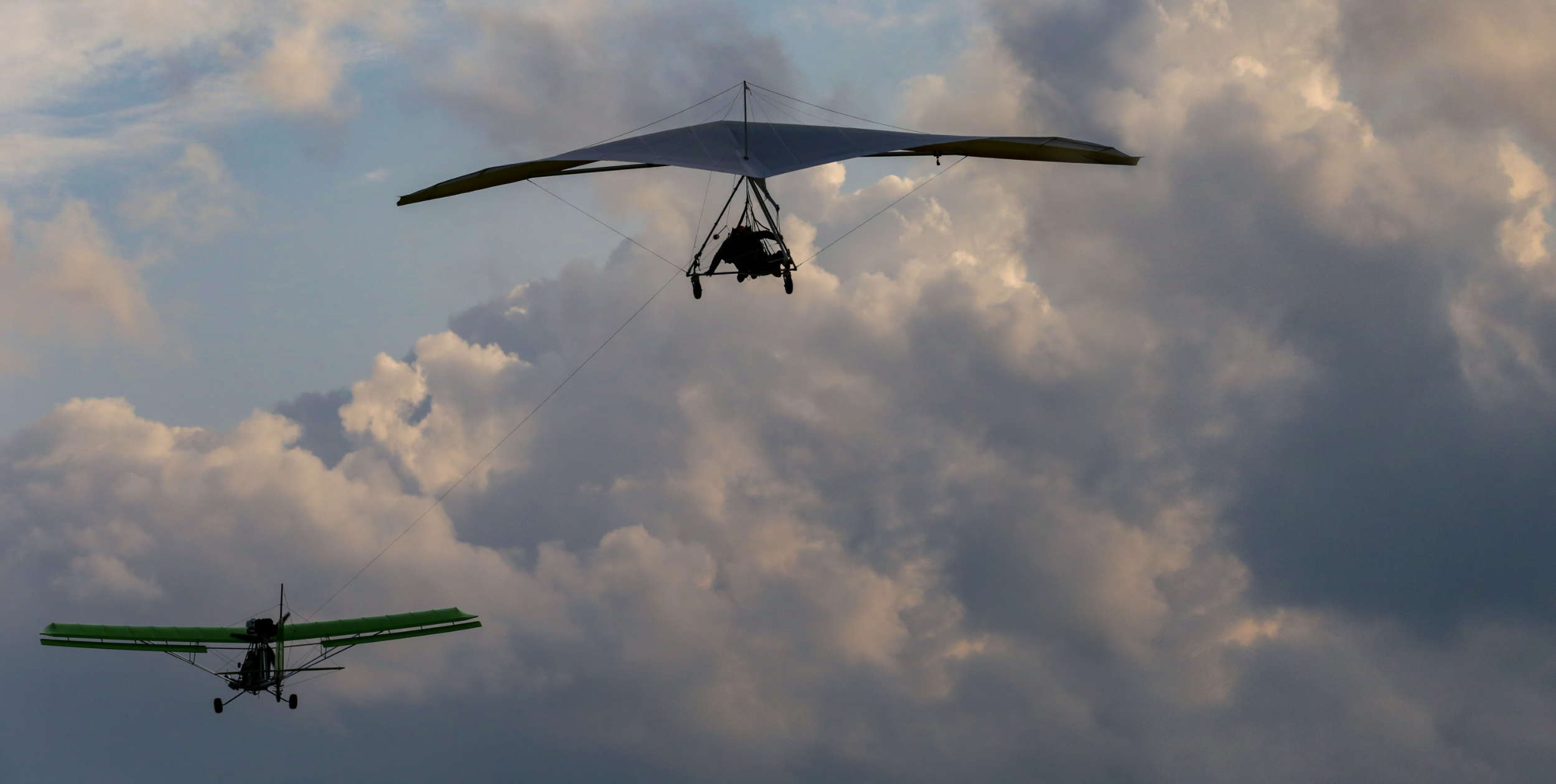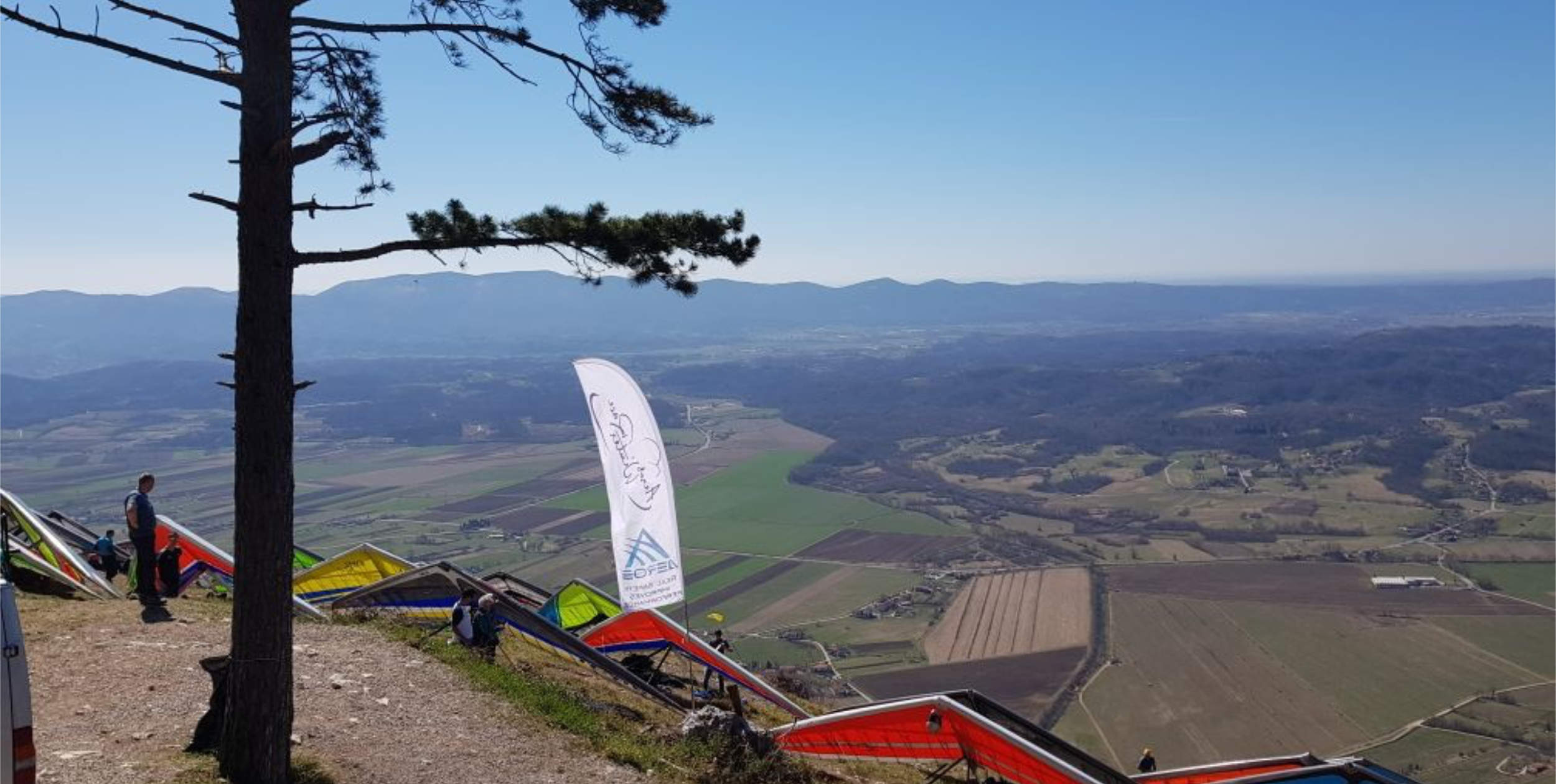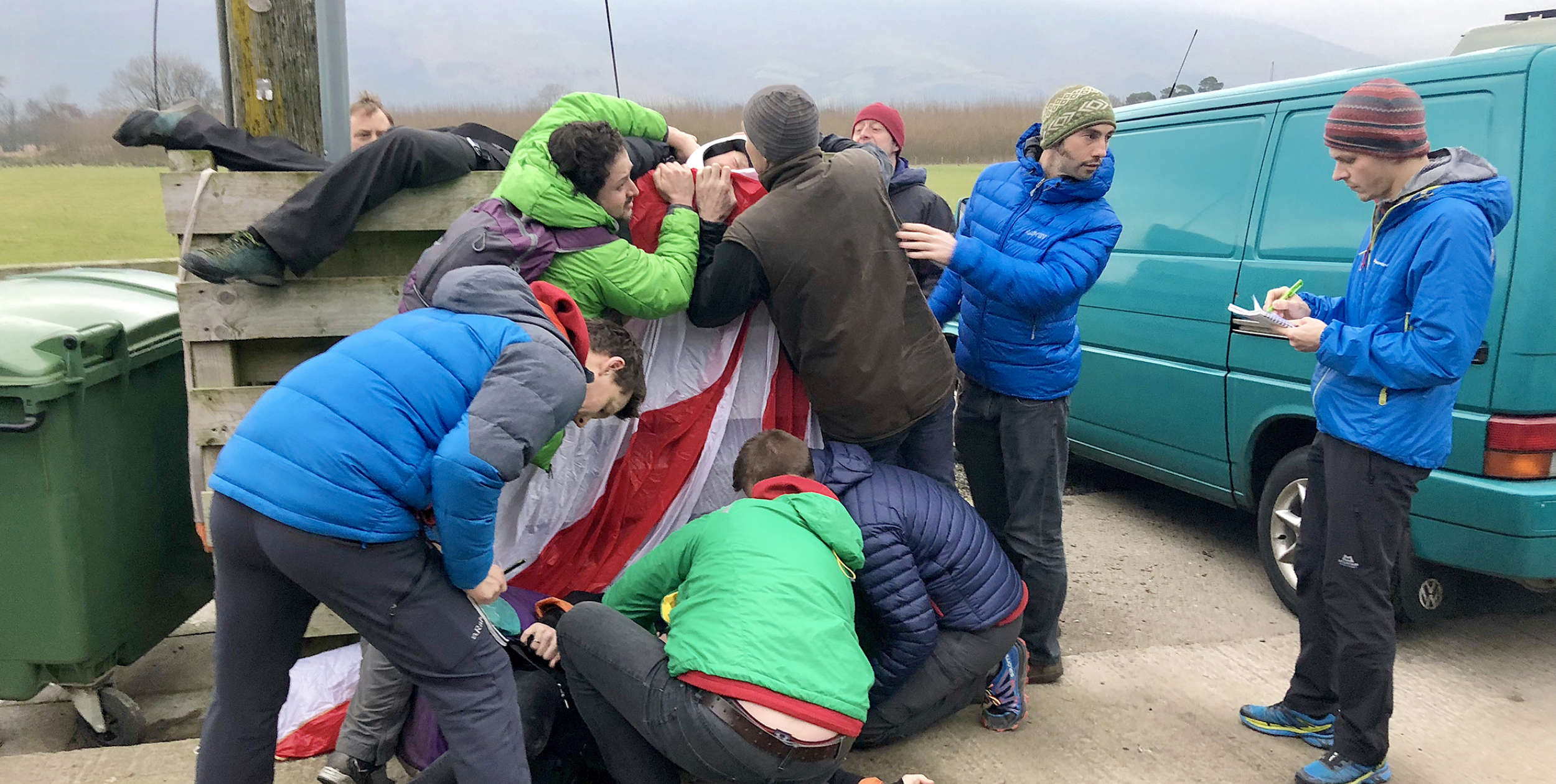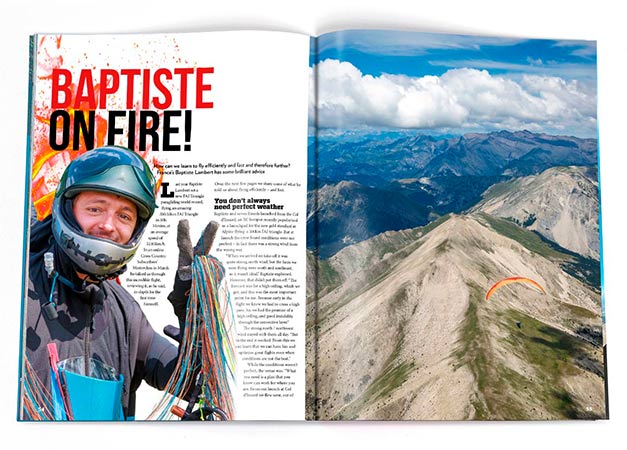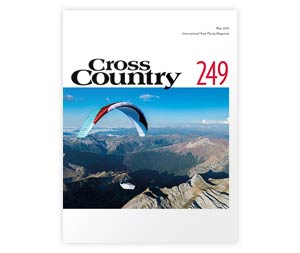Jonny Durand flies at the Hang Gliding World Championships 2009
Jay Rebbeck explains how to pick the best climbs for the day to maximise your distance or fly as fast a task time as possible. First published in Cross Country magazine in 2002
Racing pilots love flying fast. When you’re in a contest there’s nothing better than cruising past a competitor as if they’re standing still. Sadly, the secret to beating that glider home is very rarely as simple as flying faster. There is a science underlying your optimal speed to fly.
Imagine this scenario. You’ve just climbed your Laminar ST in a 3m/s thermal to 5,000ft, and level your wings at cloud base ready to start cruising. At what speed do you leave 20mph? 40mph? The answer has nothing to do with the climb you’ve just had – that’s history now – and everything to do with deciding how strong your next climb will be.
MacCready Made Simple
Based on this central tenet – that your cruise speed depends on your next climb – Paul MacCready evolved an entirely mathematical model that tells you what speed you should fly at any given moment. It takes into account the following three factors:
- The predicted climb rate of your next thermal. If you reckon it’s going up like a rocket, then you want to get there as fast as you can – even if you lose a few thousand feet getting there. On the other hand, if it’s 8pm and you’re venturing out into dying evening thermals, you’ll want to glide cautiously to minimise the height required in your next weak thermal.
- The performance of the glider you are flying. In general, the better your glider’s performance, the faster your optimal glide speed becomes.
- How much sink or lift you are currently flying through. The theory of dolphin flying says that we should slow up to our minimum sink rate of, say, 25mph in good lift, but that the stronger the sink we encounter, the faster we should fly so we spend the least time possible suffering from it.
Right, we can see why these factors are all important. How does MacCready handle them? The beauty of his theory is the simplicity of applying it. Just take a launch, wind the MacCready ring on your vario up to the average climb rate you expect to achieve (or type it into your flight computer) and you’re away.
What MacCready has done is to work out that for a given rate of climb there is an optimal speed to fly your particular glider. This is the most efficient speed, taking into account the balance between getting there fast to exploit good climbing potential, but not so quickly that you lose valuable height that takes too long to regain. Furthermore, he has calculated how that speed must be varied to compensate for associated lift and sink en route.
For example, assume it’s a nice XC day, with a 4,000ft cloud base and good 2m/s climbs. So you set your MacCready to 2m/s, blast off down track and simply follow the speed-to-fly, depending on how much lift or sink you’re in, stopping every time you can average a thermal of 2m/s or stronger. Could this get any easier?
That sinking feeling…
Until that is, you hit the spuds! With a MacCready set at 2m/s, your speed-to-fly director will advise you to fly regularly between 38 and 42mph in sink, and you will find yourself hurtling towards the ground at an alarming rate. If you are fortunate enough to avoid a field, and continue finding 2m/s thermals, you might complete the task, at the expense of winding up a sweaty, adrenalin-filled, palpitating nervous wreck. “But Paul told me it was efficient,” you mutter as you stumble back to your car…
So, where’s the catch? Very simply, MacCready doesn’t allow for the fact that often we don’t actually know how strong the next thermal is going to be. In order to fly the fastest cross-country speed, the trick is to climb in thermals that are unusually strong for the day, and avoid climbing in any particularly weak ones. This is where MacCready theory leads us into two problems.
Firstly, what happens if you are forced to take a thermal that is weaker than your MacCready setting? Well, your average speed plummets. What your MacCready ring doesn’t tell you is that your average speed dips only slightly if you fly 5mph too slowly to a good climb, but takes a battering if you fly 5mph too fast to a weak climb.
Secondly, although you may feel very content having flown at a 2m/s MacCready setting into a 2m/s climb, what if the next climb afterwards is 4m/s? Unfortunately, you are forced to climb in the first 2m/s thermal to gain back all that height you’ve burnt off. Even though you might now be sure that you can see a 4m/s climb ahead, you are forced to climb in 2m/s to gain the height to reach the next climb!
If you fly at more cautious MacCready settings, you can sample more thermals before you’re forced to stop for one, so your chances of finding the unusually strong climb are also higher.
How fast should I fly?
Where does this leave us? Well, although MacCready theory isn’t perfect, we can adapt it easily to create a solid basis for choosing our speed to fly. A good working rule that I often use is simply this: I look at the sky ahead, think what thermal strength I would be prepared to stop and climb in, halve it and that’s my MacCready setting. Easy! I am gearing my speed to my expected climb rate while flying slowly enough to sample more thermals. This greater selection means I can cherry pick the best ones.
That’s the theory, but how do I apply this in practice? As I’m climbing in a thermal I’ll have a target cruise speed in mind for when I leave. Say I’m flying a Laminar ST on a typical XC day with 2m/s climbs, let’s say my target speed is 35mph. However, it’s horribly inefficient to accelerate in sink, so pull in the bar as you roll out of the thermal and dive to your target cruise speed.
While cruising with my MacCready set on, say, 1m/s, I adjust my speed only by around 5mph either side of my target of 35mph. Only if there is very good lift will I slow right down to 25mph and then maybe even weave in the lift. Personally, I don’t choose to frantically dolphin in every scrap of lift, because you are increasing the distance you fly.
Speed-to-fly myths
Flying at the right speed is all well and good, but let’s get our priorities sorted. As Darren Arkwright told me, ’To achieve fast average speeds, it is far more important to climb in strong thermals than to stick to the perfect speed.’
I remember overhearing in the bar one evening a pilot chatting with a fellow competitor: “Initially, I couldn’t work out how you overtook me, but then I realised I had my MacCready set up wrong,” he said.
In response, his competitor commented that having left their 2m/s climb he flew straight to the next cloud, climbed at 5m/s and didn’t see him again. He might as well have replied: “Try reading the sky instead of your instruments, you muppet.”
Final glides
Landing less than a kilometre short of goal two days in a row during one Spanish contest was a great lesson to me in final gliding. I now try and think of the final glide as merely an extension of the rest of the flight.
The only real difference between this and any other glide is the height at which you do it. In a competition the aim is to finish the task at the minimum height for either a safe circuit or a direct landing. That minimum height will depend on the rules of the competition, and on your own experience level.
It is easy to forget that the only way to optimise your final glide is to continue making good soaring decisions! The classic mistake is to treat the final glide as something quite separate from the rest of the flight.
Two types of problems ensue, depending on the pilot’s confidence. Mr Confident keeps leaving thermals under glide hoping to gain height by dolphining up on to glide from low down. Mr Cautious tries consciously to climb up to final glide at the first opportunity – even when high and in weak lift.
Should I stay or should I go?
So, how do you decide when to stay and climb, and when to press on? Firstly, think how your flight has been going recently. If you’ve been able to run under cloud streets for long periods without turning, then you will probably gain on glide, but if it’s been a classic blue day with hot-spot climbs and glides in heavy sink, then expect something similar on final glide.
Secondly, take a good look ahead. If you are flying into deteriorating weather, then try to climb on to glide early. If you can see improving conditions, then push harder to get a strong climb on to glide.
So how do I final glide in practice? In preparing the flight I’ll have thought approximately where I expect to approach final glide height. This is especially important if the last turning point is close to the airfield, when you could easily be above glide before rounding it.
As I am approaching final glide height, I continue soaring using the same height band that I have been finding the best thermals in. If climbs are broken low down, then stay high. If climbs are dropping off below cloud base, then press on.
If you know your distance to home, and your head/tail wind component, you can calculate the height required using your final glide computer. However, this height depends on the MacCready setting you choose. For a fast glide home on a high MacCready setting, you will need to climb higher than for a slow glide on a low MacCready setting.
OK, so I pull into a good climb as I am nearing my final glide – how high do I climb? MacCready has the answer! Normally, you cannot select your exact MacCready setting because you don’t know what strength your next climb will be. However, in your last thermal, you do know exactly what your average climb rate is. So use that as your actual MacCready setting for your final glide calculation. This will tell you the optimal height to climb for the thermal you’re in.
If the sky ahead looks dead, then climb to the height your computer tells you, plus whatever safety margin you require. If the look of the sky on the way home makes you think you’ll lose (or gain) significantly on glide, then you should leave above (or below) glide accordingly.
When you leave the last thermal, initially turn the MacCready down and cruise slowly. As your glide angle improves, you can gradually crank up your MacCready. So, your glide should get faster and faster all the way.
• Got news? Send it to us at news@xccontent.local
Subscribe to the world’s favourite hang gliding and paragliding magazine

